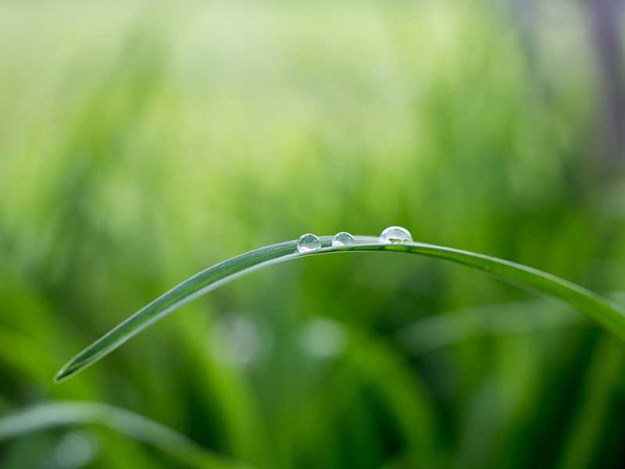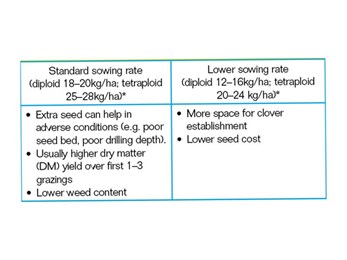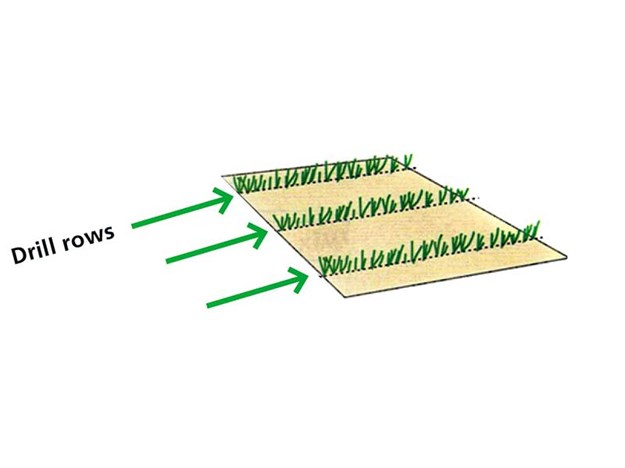Farm advice: Sowing rates for perennial ryegrass pastures
Sowing rates can be a hot topic of discussion, with factors such as soil condition affecting decisions. Dairy NZ discusses the issue relating to perennial ryegrass pastures.
From time to time, there is some debate in the sector on the ‘correct’ perennial ryegrass seed sowing rate for New Zealand farms. However, as DairyNZ farm system specialist Chris Glassey explains, there’s no one right answer.

During spring in the South Island, you’ll be thinking about sowing pasture. In the North Island, farmers usually sow in autumn. Irrespective of your location, the research shows a wide range of different sowing rates can all result in satisfactory pasture establishment. Seed can be sown under a wide range of soil conditions, so there isn’t one sowing rate to fit all circumstances.
Unfortunately, a standard recommendation can’t cover the gambit of different conditions in New Zealand but, based on the research, I recommend 18–20kg of seed per hectare (kg seed/ha) for diploid cultivars and 25–28kg seed/ha for tetraploid cultivars. In some of the circumstances outlined below, a lower sowing rate will be enough.
Standard vs lower sowing rates
The table below compares the advantages of standard versus low perennial ryegrass sowing rates.

* Regardless of ryegrass ploidy and sowing rate choice, clover seed is typically added at three to four kilogrammes per hectare.
Good conditions a must for low sowing rate
One advantage of lower ryegrass sowing rates is higher clover content in the pasture. This improves feed quality and animal performance.
However, if low ryegrass sowing rates are to be successful, you must have excellent conditions for the new pasture to establish. This includes producing a good seedbed (fine, firm, consolidated). As well as conserving moisture, this allows seed to be sown at the right depth.
Lower ryegrass sowing rates also generally mean more weeds in pasture. If weeds are a problem (particularly grass weeds such as brown top, poa, etc.), I recommend using standard sowing rates and considering the sowing method.
Standard sowing rate increases yield
Using a standard or higher ryegrass sowing rate usually gives a temporary (not long-term) increase in dry matter (DM) yield over the first one to three grazings.
This varies but might be an extra 500kg DM/ha, with a value of $150 to $200/ha (using 30–40 cents/kg DM for this high-quality late autumn/winter feed). The cost of an extra 6kg/ha of seed may be $60 to $90/ha.
Sowing method
 |
|
Choosing sowing rates for perennial ryegrass diagram Method 1
|
Sowing method affects the speed that ground cover is established, as the diagram below shows. Where weeds are a problem, I recommend Method 1.
Method 1: spreading seed more evenly, e.g. roller-drill, broadcast, cross-drill, drills with narrow row spacing.
- Better ground cover (better weed control)
- More space between plants so better clover establishment
- These methods suit higher sowing rates
 |
|
Choosing sowing rates for perennial ryegrass diagram Method 2
|
Method 2: packing seed in wide rows, e.g. single pass with drill with 15cm rows, undersowing.
- Seed packed more tightly in rows
- Space between rows for weeds (or clover if it’s sown separately, e.g. small seed box)
- Suits lower sowing rates
Under most conditions, 18–20 kg/ha of diploid ryegrass seed is sufficient to successfully establish new pasture, although, opportunities exist to reduce sowing rate and get similar results when conditions are favourable.
For more information, visit dairynz.co.nz/pasture-renewal
Find farm machinery for sale in NZ
Keep up to date in the industry by signing up to Farm Trader's free newsletter or liking us on Facebook


.jpg)
.jpeg)

.jpg)
.jpeg)
.jpg)
.jpeg)
.jpeg)







